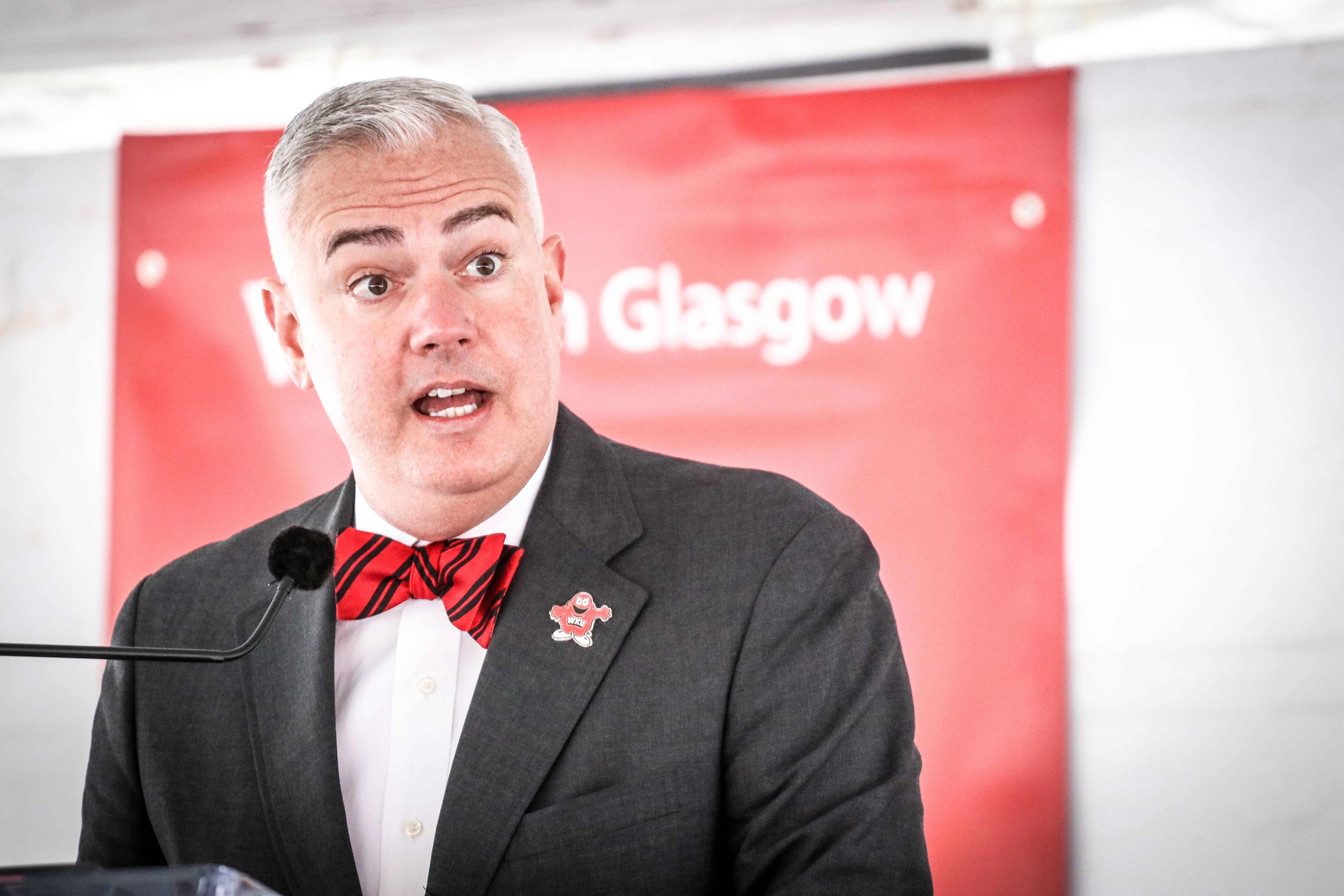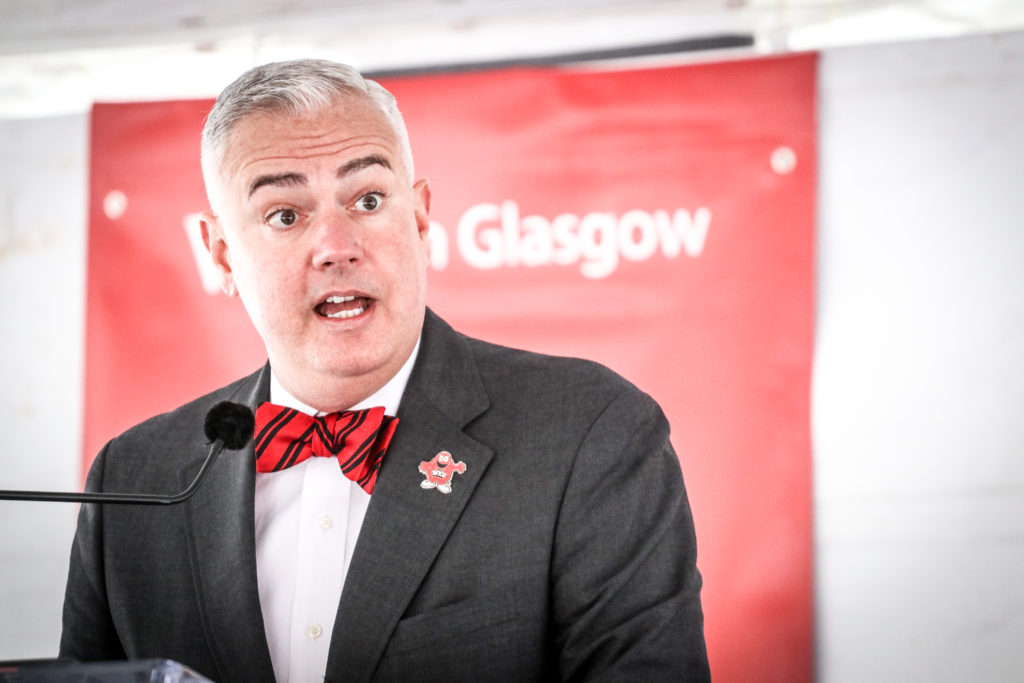
Timothy Caboni, the president of Western Kentucky University, speaks at an event at WKU Glasgow on Oct. 20, 2022.
(WCLU NEWS FILE PHOTO)
BOWLING GREEN — Western Kentucky University has again experienced record fall-to-spring retention rates among its undergraduate, degree-seeking students.
In an email to campus on Monday, WKU President Timothy C. Caboni announced that the fall-to-spring retention rate for all undergraduate, degree-seeking students has reached 85.1%, the highest it has been since the university began tracking this data in 2010.
“The rate at which students continue their education with us, semester to semester and year to year, demonstrates continued progress toward our goal of an 80% first-year retention rate outlined in our strategic plan, Climbing to Greater Heights,” Caboni said.
First-time, first-year students who were enrolled at WKU in the fall 2022 semester returned to the university this spring at a rate of 91.1%, President Caboni announced. This represents a 4.8 percentage point increase in just over half a decade, when retention for first-time, first-year students was 86.3% among the class that entered WKU in the fall of 2017. First-time underrepresented minority (URM) students returned at a rate of 90.8%, a gain of more than 10 percentage points since the 2017-2018 academic year.
President Caboni noted that successfully retaining students illustrates the dedication of WKU’s faculty and staff.
“It is evidence of your commitment to provide an unparalleled academic experience for our students – from extraordinary instruction and hands-on application to residential life, campus engagement and more,” he said.
The university’s Living Learning Communities (LLCs) also played a significant role in these increased retention rates, according to a news release from the university. First-year students who participated in a Living Learning Community returned at a rate of 95.7%, compared to 89.6% of non-LLC participants.
“These remarkable results demonstrate the efficacy of our commitment to a comprehensive approach to academic and social integration during the first year,” Caboni said. “Our continued and growing investments in Living Learning Communities provide students with immediate access to faculty with a shared academic interest, coupled with a supportive living environment and opportunities for academic and social engagement outside the classroom. We see the direct effects of these investments in their retention and success.”
Provost Bud Fischer highlighted the role that the university’s faculty and staff play in WKU’s retention success.
“I am thrilled at WKU’s retention rates,” he said. “Our students are our top priority, and this is a clear indication that they feel supported, engaged and valued on our campus. We are committed to providing them with the opportunities they need to reach their goals, and I am thankful for the efforts of our faculty and staff to help our students succeed.”





